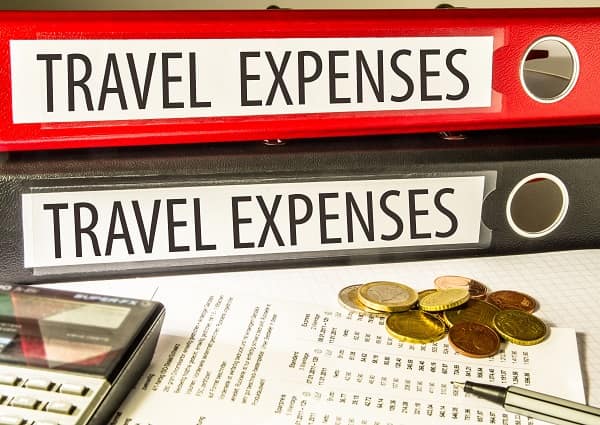Every business organization has regular expenses and taxes that reduce the profits. Employees and employers sometimes spend on behalf of their organization. They are allowed an expense reimbursement based on the local laws. Ensure you abide by all the laws applicable to the location of your business enterprise.
What is an Employee Expense Reimbursement?
The employee reimbursement procedure enables employers to reimburse employees who spend their own money for work-related expenses. They are not responsible for providing any details about their salary during this procedure.
Generally, reimbursements are issued when the employee travels on the organization’s behalf, but they can also be dispensed for different reasons, such as work-related equipment and other materials. Reimbursement details are not included in the salary details in most companies.
A common question that arises is, are reimbursements taxable? Employee reimbursements are generally not taxable, although reimbursement laws vary from country to country.
Various Types of Employee Expense Reimbursement
Employee reimbursement expenses are broadly classified into three distinct types.
Travel Expense Reimbursement

Your employees may go on business trips to attend meetings or work-related conferences. All the expenses, from the travel to their stay and meals, are eligible for reimbursement. Most companies pay a projected sum beforehand or reimburse the amount later on. In case the worker uses their own vehicle for work-related trips, mileage reimbursement can also be provided.
In the USA, the Internal Revenue Service has published a standard mileage rate for employees, self-employed contractors, and other tax-paying citizens. You can also choose to adopt your own employee expense reimbursement plans while abiding by the country’s laws and per diem rates specified by the IRS.
Medical Reimbursement

Most companies offer their employees health benefits and packages that also include tax benefits. If a worker suffers from a severe disease or accident, they will get reimbursed for the amount spent on the treatment and hospitalization. However, all the required details, such as billing details from any established health institution, must be supplied to the company.
“Providing comprehensive health benefits not only supports employees during medical emergencies but also fosters a sense of security and loyalty within the workforce. When companies offer well-structured health plans, employees are more likely to stay engaged and productive, knowing their well-being is a priority.” shares Georgiana Florea, Founder of Nail Salon Tech.
Medical reimbursement laws also vary from one country to another. Many first-world countries such as the United States have strict medical reimbursement plans set up by the government. Companies can choose from any of them to cover their workers’ health expenses. The health reimbursement program allows the employer of a company to decide how much money will be allotted to it and how much an employee can ask for in their health expenses. They can also choose to avail of a deduction in their tax percentage if these plans go unused.
Three main types of health reimbursement plans are as follows.
- Group health reimbursement planning
- Health reimbursement planning for individuals
- Qualified small employer health reimbursement arrangements
Business Expense Reimbursement
Sometimes, the employees spend out of their own pockets for office-related stationery and other costs, such as work-related calls or training on their business trips for their jobs.
Companies must reimburse all these incurred expenses related to the business in the form of business reimbursement. However, they will not be reimbursed for their personal expenses, such as trips to heritage sites and general traveling.
Accountable Plan for Employee Expense Reimbursement
It’s essential to understand what are reimbursement expenses, and how you can compensate for them. The IRS guidelines have made it mandatory for every business organization to have an accountable plan for employee reimbursement, apart from the money spent from the personal salary for individual expenses, which is subject to taxation in most countries, including the USA. The expense reimbursement under accountable planning must meet all the requirements published by the IRS. They differ from one place to another, but generally, they are as follows:
- The employee can only apply for reimbursement if the expenses are related to work/business.
- The employee is liable to provide all the necessary details regarding the payment details for the expenses in the form of receipts or invoices within a specified period.
- The employer can also choose to pay the employee in advance, but the employee must give a comprehensive report for the sum of money within a defined period.
An accountable plan is a form of reassurance for employees to fall back on so they do not get taxed unnecessarily.
Employee Expense Reimbursement Process
Employers can choose to set up a reimbursement expense process in three easy steps, which we will discuss below.
Make a Properly Defined Policy Related to Company Expenses
Interpreting and analyzing any process is essential for proper understanding and the desired results. A professional employee reimbursement policy generally contains all the details about the reimbursement, with time frames, specifics, and explanations on the expenses eligible for expense reimbursement. It also has all the instructions for the people concerned and other relevant guidance. It’s crucial to get the reimbursement policy right, as it affects your organization. You’ll also need to structure and decide if your reimbursements are taxable or not.
Make Your Expense Reimbursement Process Automatic
You can choose to have a manual employee reimbursement process, but it generally takes more time and is often not up to the mark of the partners of the company. It also frustrates the employees and business leaders. You can make the entire reimbursement process automatic, increasing productivity, saving time for every party involved, and creating a streamlined flow that can easily be adopted by your employees. Automation makes everyone’s tasks simpler.
If you are going for expense management software, choose travel and expense solutions, as they will give you complete access to all the relevant information for all the features of your reimbursement policy. They will also help you save on business expenses as you will get valuable insights into all the sectors.
ExpenseTron is a nifty expense management software that can be used to file expenses entirely on Slack. Real-time expense approvals without dreaded expense reports.
Administer and Supervise Employee Expense Reimbursement
You must start considering employee expenses as a means to find out new facts about the trends, make a strategy, and quickly form a financial goal for the company, saving time. You will also be able to notice saving opportunities and obtain amazing insights with full data accessibility while ensuring that the process abides by the law and deals with the employees compliantly. We’ll talk about a few key factors while choosing expense reimbursement management software for your company.
- Simple dashboard which will provide you with constant analysis of data flow, giving you complete data accessibility
- Automatic notification feature for seamless flow in the reimbursement process
- A mobile app to ensure the filing application process becomes less complicated
- A docile and easy user interface, enabling the partners of the company to change policy and examine other details
- A mileage tracking app to log and track the distance traveled using mobile apps in 2021 and advanced maps
- A mobile receipt scanner, an advanced feature in most new applications that enables the employees of an organization to scan bill receipts instantaneously
- An expense receipt management feature that allows you access to all the employee’s expense reimbursement details to track and sort them according to your needs
Difference Between Accountable Expense Reimbursement and Non-Accountable Reimbursement
Normally, most business organizations provide two subsystems for expense reimbursement: non-accountable and accountable reimbursements.
Non-accountable reimbursement policies limit the employees to a certain amount of capital for the entire project, from which the employee can spend. These plans must apply to services, such as food and other necessities, and can be allotted a certain sum of money for a specific amount of time. However, the employee will have to pay for the extra expenses if it exceeds the allocated budget. The employee is not required to provide bills and receipts for reimbursements, and the reimbursed amount isn’t generally subjected to tax.
An accountable policy is a more popular structure where the only difference is that the employees will have to provide the company with the payment receipt, and upon submission, they will be reimbursed with the full amount. However, it is important to remember that the reimbursement rate differs from one country to another.
Abide by Internal Revenue System Guide and Rules
Any employees from any business organization should only pay taxes for their salary and other allotted tax benefits. Employers must pay their employees back for any expenditure made for work-related purposes in the form of employee expense reimbursement.
The reimbursement is not subjected to any tax, as long as there is a written accountable reimbursement policy established by the company’s employer. In addition, proper receipts must be submitted by the employee for the expenses. While selecting an accountable plan ensure that the employees give a proper record of all the expenses. You can choose to hire a business accountant to make sure your employees are reporting the right details about their expenses.
How is Your Business Running Reimbursements?
Businesses and other such institutions compensate employees for all work-related expenses incurred. The compensation is in the form of reimbursements. The employee is issued reimbursements if they provide expense proof. Usually, no tax is levied on the reimbursed sum of money.
But it is key to have a comprehensive reimbursement policy and process in place. Do you have a kickass expense reimbursement software to make your life easier?